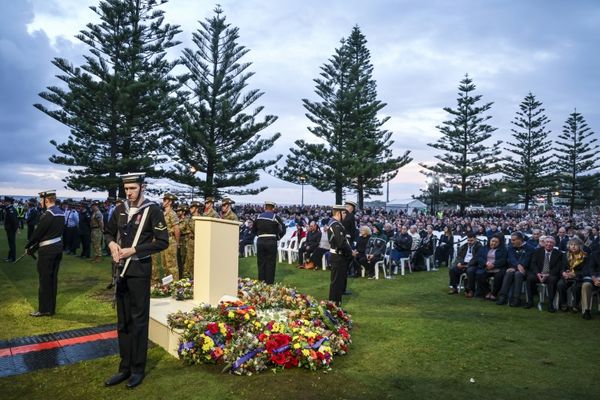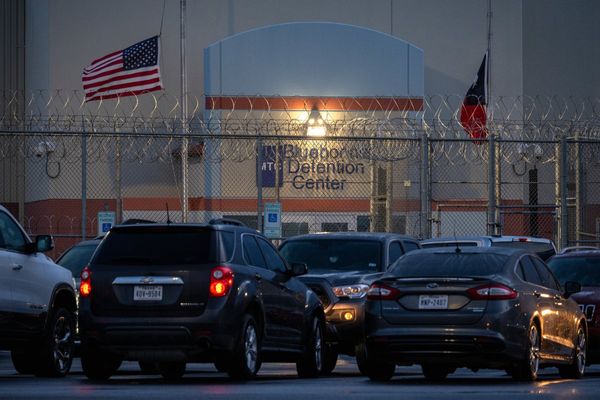
As a proposal to extend the life of Victoria’s biggest goldmine goes under the spotlight, Kirsty McDonald stands on one side of a community faultline.
Her experience on a bush block she describes as her dream home has pitted her against the mine’s Canadian owners, Agnico Eagle, as they seek approval for plans to expand the underground mine, located 20km east of Bendigo, and extend its life by 10 years.
First it was low-frequency noise from a ventilation shaft that affected her. Then in 2021, McDonald started to notice mine-induced seismic activity shaking her property.
“They are incredibly frightening, very stressful and unpredictable,” she says. “They are happening more often and the magnitude is increasing.”
Hers is one of 1,056 submissions to a four-person inquiry committee considering a new environmental effects statement (EES) for the mine, with a directions hearing on Wednesday.
Other neighbouring landowners, advocacy and regulatory groups have also raised concerns, including: the potential for increased traffic; more blasting noise; the risk of contamination of groundwater and the Campaspe River; the “significant impact” of habitat loss on the critically endangered swift parrot; and the mine’s purchase of local homes.
High on the list for McDonald is the increase in seismic activity. Agnico Eagle reports in its lengthy EES documents that there is a 25% chance of “cosmetic damage” to about 150 homes due to mining-related seismic activity. A study by the Institute of Mine Seismology – also included in the EES documents – suggests as many as 250 homes within a 6km radius of the mine, including nearby Axedale, could be affected if the plans are approved. The largest recorded event so far, on 5 November 2023, had a magnitude of 3.1.
‘Mining is a way of life in Bendigo’
But many in the community back the proposal to expand the mine. Hundreds of submissions support the plans for two new large above-ground tailings dams, a brine evaporation pond, a waste rock dump, further cutback work in three open pits, new carbon-in-leach tailings hardstands, and the sale of tailings.
“Mining is a way of life in Bendigo and there is no need to stop now,” one submission wrote.
More than four million ounces of gold have been extracted from Fosterville since the underground mine began in 2005, and particularly since the discovery of higher grade ore in 2015. Production peaked at 509,601 ounces in 2021 and dropped to 277,994 ounces at the end of 2023, with 273,000 ounces of proven reserves, and 1,409,000 ounces of probable reserves.
Agnico Eagle say all the proposals included in its Sustained Operations Project, apart from a plan for treated mine water to be pumped into an underground aquifer, simply build on existing work practices.
The mine employs about 800 staff and direct contractors. A cost-benefit analysis of the project by the Australia Institute, commissioned by Agnico Eagle, said the project “represents a strong net benefit to Victoria” even if unqualified impacts, including environmental impacts and ground vibration, are “quite significant”.
Greater Bendigo city council, which supports the proposal, says the mine has provided the regional city with significant economic benefits but it raised concerns about some aspects of the project, including the proposal to pump into the aquifer. In a 131-page submission to the EES, the council says “cumulative impacts are not considered for social or human health impacts, and mitigation measures have not been sufficiently developed”.
Some objectors to the proposal have also questioned the $6.76m rehabilitation bond held with the Earth Resources Regulator, saying it falls far short of what is needed to restore the site.
In May, the company struck a profit-sharing deal with the Dja Dja Wurrung Clans Aboriginal Corporation (Djarra), which will also allow traditional owners to influence the eventual remediation of the site. The full financial details of the deal have not been disclosed, but Djarra CEO Rodney Carter said it could provide “real generational uplift”.
Agnico Eagle would not comment further on the proposal, saying the EES documentation “comprehensively addresses the potential environmental, social, and economic effects”.
A seven-week hearing is scheduled to run from 28 October, with the panel due to give a recommendation to the state planning minister, Sonya Kilkenny, by the end of 2024.
Jolyon Attwooll is a journalist and editor in central Victoria







